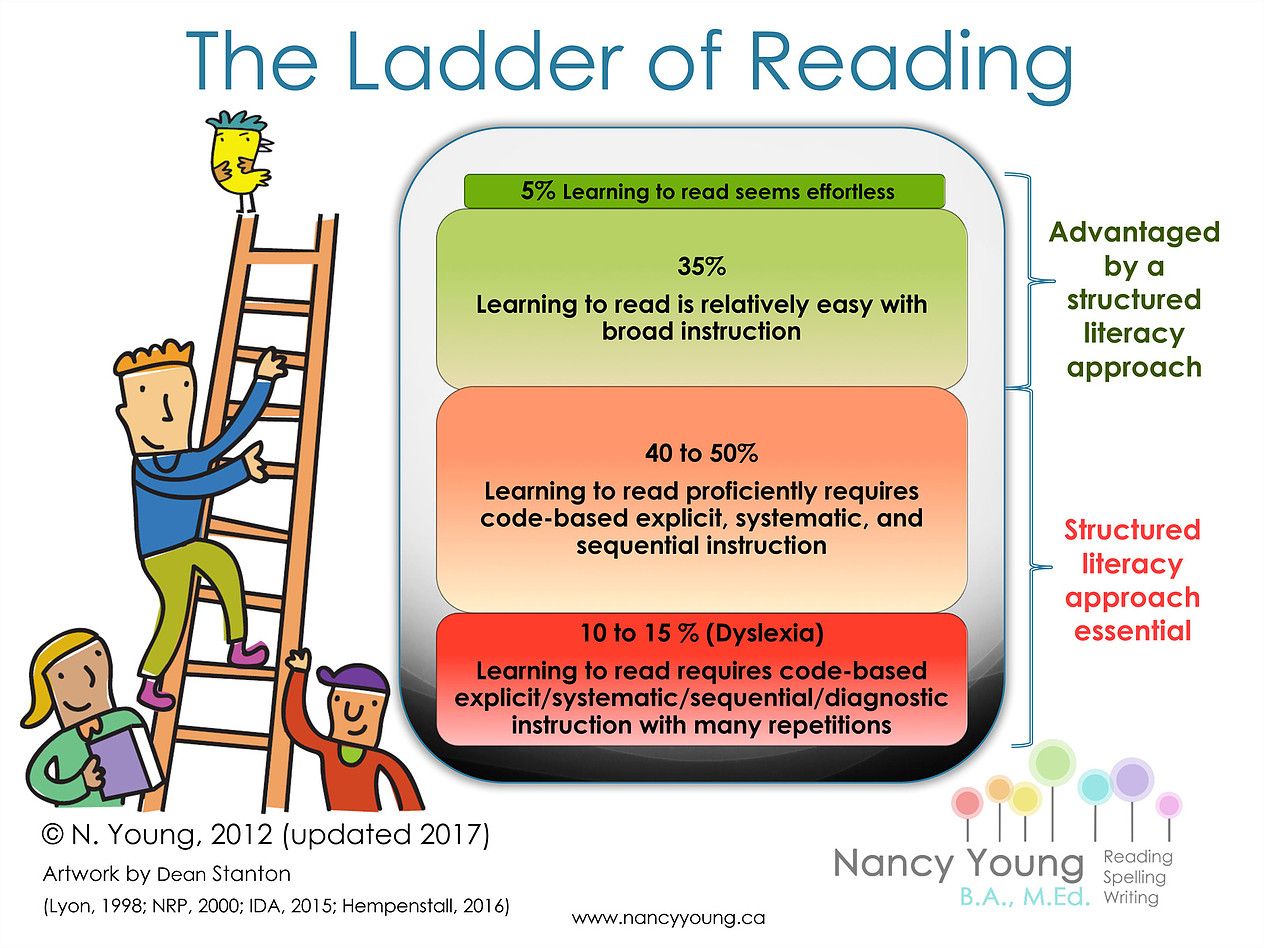You are here
4.1 Introduction to School Based-Supports

"One of the great mysteries to challenge researchers is how reading ability develops and enables skilled readers to read and comprehend with ease. Skilled readers can focus their attention and thought on the meaning of text, while the mechanics of reading operate unobtrusively. A major contributor to this skill is the ability to read words as single units quickly and automatically."
— Erhi, Cardoso-Martins and Carroll (2014)
Research in evidence-based reading instruction and the science of dyslexia has demonstrated that there are two key ingredients in addressing the academic needs of students with dyslexia: early diagnosis and effective instruction. In Chapter 3: Assessment and Identification of Dyslexia of this handbook, early identification of reading risk and the comprehensive evaluation for dyslexia are discussed. Chapter 4 focuses on the design and delivery of effective instruction for all students, including those with dyslexia.
As described in Chapter 1: Introduction, all students will benefit from participation in a comprehensive literacy program. Students need instruction that explicitly teaches the essential components of literacy (oral language; phonemic awareness; phonics; fluency; vocabulary including morphology; reading comprehension; and written expression including spelling, syntax and grammar) in a manner that incorporates the guiding principles of what is commonly referred to as Structured Literacy.
Research into the science of reading has created an understanding that while a Structured Literacy approach to instruction benefits all students, it is not only beneficial to students with dyslexia but critically essential to their success in becoming readers and writers (Kilpatrick, 2015; Erhi et al., 2001; Foorman et al., 2014).
The April 2018 issue of the Examiner, a bimonthly electronic newsletter of the International Dyslexia Association, introduced readers to an infographic titled The Ladder of Reading. The infographic, created by IDA member Nancy Young, is used in this handbook with her permission. In sharing the infographic with readers, the IDA stated:
The concept of The Ladder of Reading emerged during Young’s lectures with teachers and parents who believed the myth that Structured Literacy was only beneficial and necessary only for struggling readers. To counter that misunderstanding, she created an infographic featuring the categories and percentages that illustrated the ratio of individuals who require an explicit, sequential, systematic, phonics-based approach to learning to read, compared to the small proportion of individuals who learn to read effortlessly. With a few well-chosen words, the Ladder conveys the point, frequently unknown, that a Structured Literacy approach to beginning reading is advantageous for most students.

More information related to the percentages and statistic used in the infographic can be found on the International Dyslexia Association webpage through the link “The Ladder of Reading Statistics”.
The International Dyslexia Association’s fact sheet Effective Reading Instruction for Students with Dyslexia (2015) explains that the most difficult challenge for students with dyslexia is learning to read. With this primary problem in mind, this handbook will first focus on reading instruction and how evidence-based methods recommended incorporate other important literacy skills, such as oral language, spelling, and written communication.
Having trouble with this webpage?
If you have problems with broken links or accessing the content on this page, please contact the Exceptional Student Services Unit at ESSU@cde.state.co.us. Please copy the URL link for this page into the email when referencing the problem you are experiencing.



Connect With Us





